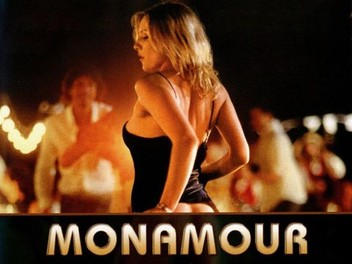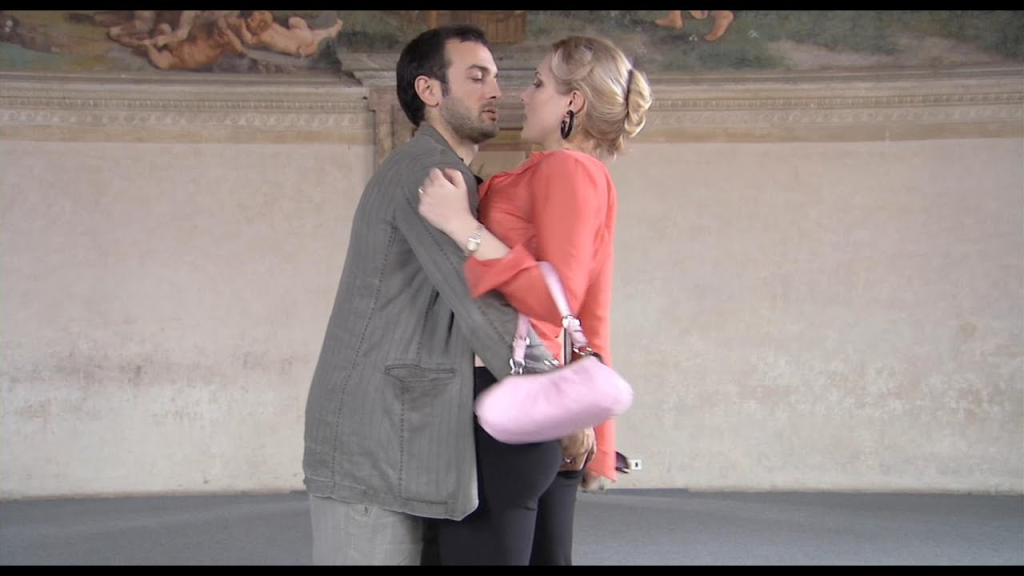Monamour

Introducing Monamour (2005): Tinto Brass’s *** Odyssey
Overview
Monamour (2005) is an Italian *** drama directed by the provocative filmmaker Tinto Brass, known for his unapologetic exploration of sensuality and desire. Starring Anna Jimskaia as Marta, a dissatisfied housewife, the film delves into themes of infidelity, sexual liberation, and personal awakening against the picturesque backdrop of Mantua during the Festivaletteratura book fair. With a runtime of 98 minutes, Monamour is a quintessential Brass production, blending lush cinematography, explicit content, and a playful yet controversial narrative. Released in 2006 after facing censorship challenges, the film has garnered a cult following for its bold aesthetic and Jimskaia’s captivating performance, though it remains divisive among critics and audiences. This article provides a comprehensive exploration of Monamour’s plot, cast, production, themes, reception, and cultural significance, situating it within Brass’s oeuvre and the broader landscape of *** cinema.

Plot Summary
Monamour centers on Marta (Anna Jimskaia), a young Venetian housewife married to Dario (Max Parodi), a successful but emotionally distant book publisher. Despite her love for Dario, Marta finds their sex life monotonous, resorting to frequent masturbation and journaling to express her unfulfilled desires. During a trip to Mantua for the Festivaletteratura, Marta’s restlessness leads her to explore the historic Palazzo Te, where she is pursued by a mysterious stranger, Leon (Riccardo Marino). Leon’s aggressive advances—photographing, forcibly kissing, and groping her—initially shock Marta, but she escapes and confides in Dario, who dismisses the incident as a product of her imagination.
At a party that evening, Marta, emboldened by Dario’s dare to go without panties, encounters Leon again. Their chemistry ignites, leading to an interrupted sexual encounter that fuels Marta’s curiosity. Encouraged by her friend Sylvia (Nela Lucic), who admits to an affair that revitalized her own marriage, Marta embarks on a torrid affair with Leon. Their encounters, ranging from public indiscretions to intimate hotel trysts, awaken Marta’s sexuality, captured in vivid scenes at a massage parlor and public spaces. As Marta details her escapades to Dario, their own passion reignites, but the question looms: is Dario’s renewed interest too late to salvage their marriage, or does Marta’s infidelity redefine their relationship? The film culminates in a reflective exploration of desire, leaving viewers to ponder the boundaries of love and fidelity.

Cast and Characters
Anna Jimskaia, in her feature film debut, stars as Marta, delivering a performance that balances vulnerability and audacity. Her uninhibited portrayal, described by fans as “a feast to watch,” showcases both emotional depth and physical expressiveness, making her a standout in Brass’s roster of leading ladies. Riccardo Marino plays Leon, the suave artist whose predatory charm drives Marta’s transformation. Max Parodi, a Brass regular, portrays Dario, whose aloofness sets the stage for Marta’s rebellion, though his character is criticized as underdeveloped. Nela Lucic’s Sylvia adds a playful, conspiratorial energy, while Virginia Barrett appears briefly as a singer, and Brass himself makes a cameo discussing ***ism versus pornography. The ensemble, while competent, serves primarily to highlight Jimskaia’s magnetic presence, with her performance often cited as the film’s strongest asset.

Production and Direction
Directed by Tinto Brass, Monamour reflects his signature style: a celebration of the female form, vibrant visuals, and a cheeky disregard for conventional morality. Co-written with Alina Rizzi and Carla Cipriani, the screenplay adapts elements from Brass’s earlier works like All Ladies Do It (1992) and The Voyeur (1994), recycling themes of infidelity and sexual exploration. Shot in Mantua, the film leverages the city’s Renaissance architecture and cultural vibrancy to create a lush, almost fantastical setting. The digital cinematography, praised for its “striking and beautiful” quality, emphasizes textures and close-ups, particularly of the human body, a hallmark of Brass’s *** aesthetic.
Produced on a modest budget, Monamour faced censorship hurdles, requiring 11 minutes of cuts to secure a “not under 18” rating in some markets. An uncut Blu-ray was released in Germany in 2024, restoring Brass’s original vision. The score, composed by Pino Donaggio, complements the film’s sensual tone with evocative melodies, while cinematographer Federico Del Zoppo’s work enhances the tactile quality of each scene. Brass’s hands-on approach, including his cameo, underscores his personal investment in the project, though some critics noted a sense of fatigue in his direction, suggesting a lack of innovation compared to his earlier films.

Themes and Style
Monamour explores themes of sexual dissatisfaction, infidelity, and the pursuit of personal fulfillment. Marta’s journey is framed as a rebellion against marital monotony, with her affair serving as both liberation and a catalyst for rekindling her relationship with Dario. The film celebrates desire and corporeality, rejecting moral judgment, which some viewers find “graceful and moving” despite its controversial elements. Brass’s fixation on specific motifs—unshaven underarms, mirrors, and the female posterior—permeates the film, creating a signature aesthetic that critics describe as both artful and indulgent.
Stylistically, Monamour is a blend of soft-core ***a and dramatic narrative, with explicit scenes that push boundaries while maintaining an artistic veneer. The film’s 98-minute runtime is filled with visually arresting moments, such as Marta’s public masturbation on a park bench or the intimate massage parlor sequence, which fans praise for their “hotter with every viewing” intensity. However, the narrative’s reliance on male fantasy—particularly Marta’s inability to refuse advances—has drawn criticism for unrealistic character motivations and a lack of depth, with some calling it a “recycled and less convincing” version of All Ladies Do It.

Reception and Legacy
Monamour received mixed reviews, reflecting its polarizing nature. On IMDb, it holds a 5.2/10 rating, with fans lauding its ***ism and Jimskaia’s performance, while detractors criticize its shallow plot and “disturbing” tone. Rotten Tomatoes lacks a Tomatometer score, but critic Jeffrey M. Anderson called it “incredibly shallow, a tad insulting, and more than just a little on the cruel side,” labeling it a “stinker” compared to Brass’s earlier work. Conversely, Letterboxd users celebrate its artistry, with one calling it “the best Tinto Brass movie and my favourite porn film, ever,” highlighting its sensual cinematography and lack of moralizing.
The film’s explicit content, including full frontal nudity and simulated sex, has sparked debate about its classification as soft-core ***a versus pornography, a tension Brass addresses in his cameo. Its availability on platforms like YouTube, Film1k, and Dailymotion, often in HD, has sustained its cult status, though it remains unavailable on major streaming services like Netflix or Amazon Prime. Monamour’s legacy lies in its unapologetic embrace of Brass’s vision, serving as a touchstone for fans of European *** cinema while falling short of the narrative depth of his earlier classics like Caligula or Paprika.

Cultural and Historical Context
Released in 2006, Monamour arrived during a period when European cinema was navigating evolving attitudes toward sexuality and censorship. In Italy, Brass’s work existed in a cultural space that both celebrated and scrutinized explicit content, reflecting a tension between artistic freedom and moral conservatism. The film’s setting during Mantua’s Festivaletteratura, a real literary event, grounds its fantasy in a specific cultural milieu, juxtaposing intellectual refinement with raw desire.
Monamour also engages with gender dynamics, presenting Marta as a sexually empowered figure whose actions challenge traditional marital roles. However, critics argue that her characterization as a woman who “can’t say no” caters to male fantasy, undermining feminist readings and making it a poor choice for couples compared to Brass’s more playful Così fan tutte. The film’s release predates the mainstreaming of explicit content via online platforms, positioning it as a relic of a niche genre that has since waned in prominence.

Conclusion
Monamour (2005) is a bold, divisive entry in Tinto Brass’s filmography, blending exquisite cinematography with a provocative exploration of desire and infidelity. Anna Jimskaia’s radiant performance as Marta anchors the film, elevating its simplistic narrative into a visually compelling odyssey. While critics fault its lack of depth and recycled themes, fans embrace its unapologetic ***ism and artistic flourishes, cementing its status as a cult classic. Available on platforms like YouTube and Film1k, Monamour remains a testament to Brass’s singular vision, inviting viewers to revel in its celebration of pleasure while grappling with its moral ambiguities.
For those intrigued by tales of passion and transgression, Monamour offers a sensual, if flawed, journey into the heart of human desire, proving that in Brass’s world, beauty and controversy are inseparable.